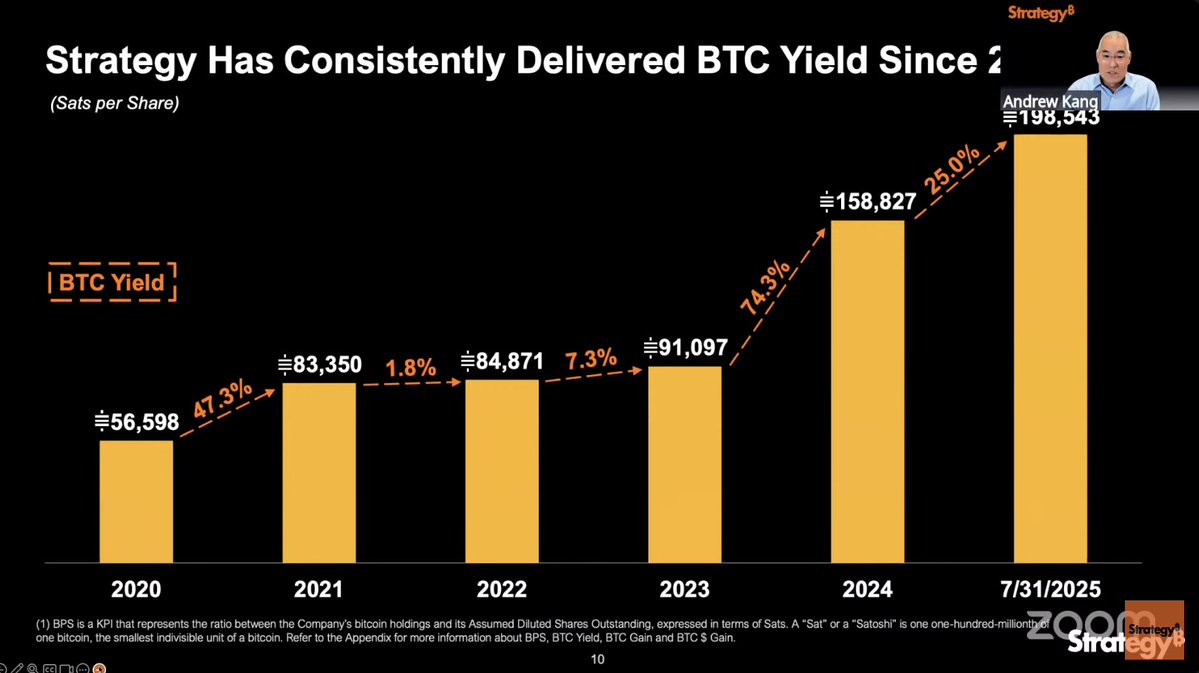Allen Farrington just posted a killer thesis on NOSTR.
Many Bitcoiners argue stablecoins accelerate hyperbitcoinization.
Allen agrees—but not for the reasons you’ve heard.
His view flips the whole discussion on its head. 🧵👇

Many Bitcoiners argue stablecoins accelerate hyperbitcoinization.
Allen agrees—but not for the reasons you’ve heard.
His view flips the whole discussion on its head. 🧵👇


He starts by conceding what few Bitcoiners will:
Stablecoins have real product-market fit.
Today, only three crypto use cases truly work at scale:
• Bitcoin as savings tech
• Mining as monetizing energy
• Stablecoins as better fiat
Stablecoins have real product-market fit.
Today, only three crypto use cases truly work at scale:
• Bitcoin as savings tech
• Mining as monetizing energy
• Stablecoins as better fiat
Objection 1: Dollar hegemony.
The critique is that stablecoins keep the dollar’s dominance intact—propping up the very fiat system Bitcoin was built to replace.
If the goal is to end central bank money, why help build rails that make it stronger?
The critique is that stablecoins keep the dollar’s dominance intact—propping up the very fiat system Bitcoin was built to replace.
If the goal is to end central bank money, why help build rails that make it stronger?
Allen’s counter: stablecoins are a speculative attack on fractional reserve banking.
When dollars leave JPMorgan for Tether, leverage in the banking system drops.
It’s still fiat—but it’s fully reserved fiat.
That chips away at the core engine of fiat credit expansion.
When dollars leave JPMorgan for Tether, leverage in the banking system drops.
It’s still fiat—but it’s fully reserved fiat.
That chips away at the core engine of fiat credit expansion.
Objection 2: “You don’t need a blockchain.”
True—stablecoins are just database entries.
But compared to clunky, KYC-heavy bank rails, a “dumb” blockchain dollar is often cheaper, faster, and more open to the end user.
True—stablecoins are just database entries.
But compared to clunky, KYC-heavy bank rails, a “dumb” blockchain dollar is often cheaper, faster, and more open to the end user.
Here’s the problem: today’s stablecoins anti-scale.
The more people use them, the:
• Higher the fees (hello, ETH gas)
• Worse the UX
• Greater the centralization
• Stronger the monopoly effect (Tether ≈ 80% share)
It works—right up until it doesn’t.
The more people use them, the:
• Higher the fees (hello, ETH gas)
• Worse the UX
• Greater the centralization
• Stronger the monopoly effect (Tether ≈ 80% share)
It works—right up until it doesn’t.
Allen’s solution: Taproot Assets on Bitcoin.
They:
• Start expensive but get cheaper as usage grows
• Allow atomic settlement over Lightning
• Let different issuers interoperate without trusting each other
This is the Visa model—if Visa had been built on actual money.
They:
• Start expensive but get cheaper as usage grows
• Allow atomic settlement over Lightning
• Let different issuers interoperate without trusting each other
This is the Visa model—if Visa had been built on actual money.
And the endgame? eCash over Lightning.
Once Lightning rails are in place, you can ditch tokens entirely.
Bearer fiat that’s cheaper, private, and instantly swappable into sats.
Once Lightning rails are in place, you can ditch tokens entirely.
Bearer fiat that’s cheaper, private, and instantly swappable into sats.
That’s the Trojan horse:
Migrate the world onto Bitcoin-native payment rails for “better dollars.”
Then flick the switch to Bitcoin itself.
Or, as Allen puts it:
Bitcoin fixes this. The End.
Migrate the world onto Bitcoin-native payment rails for “better dollars.”
Then flick the switch to Bitcoin itself.
Or, as Allen puts it:
Bitcoin fixes this. The End.
We’ll be unpacking ideas like this at BTC in DC this September—where Bitcoin policy, infrastructure, and the future of money converge.
If you care about building the next monetary system, you’ll want to be there.
| code: SWAN for 10% off btcindc.com
If you care about building the next monetary system, you’ll want to be there.
| code: SWAN for 10% off btcindc.com

• • •
Missing some Tweet in this thread? You can try to
force a refresh

























